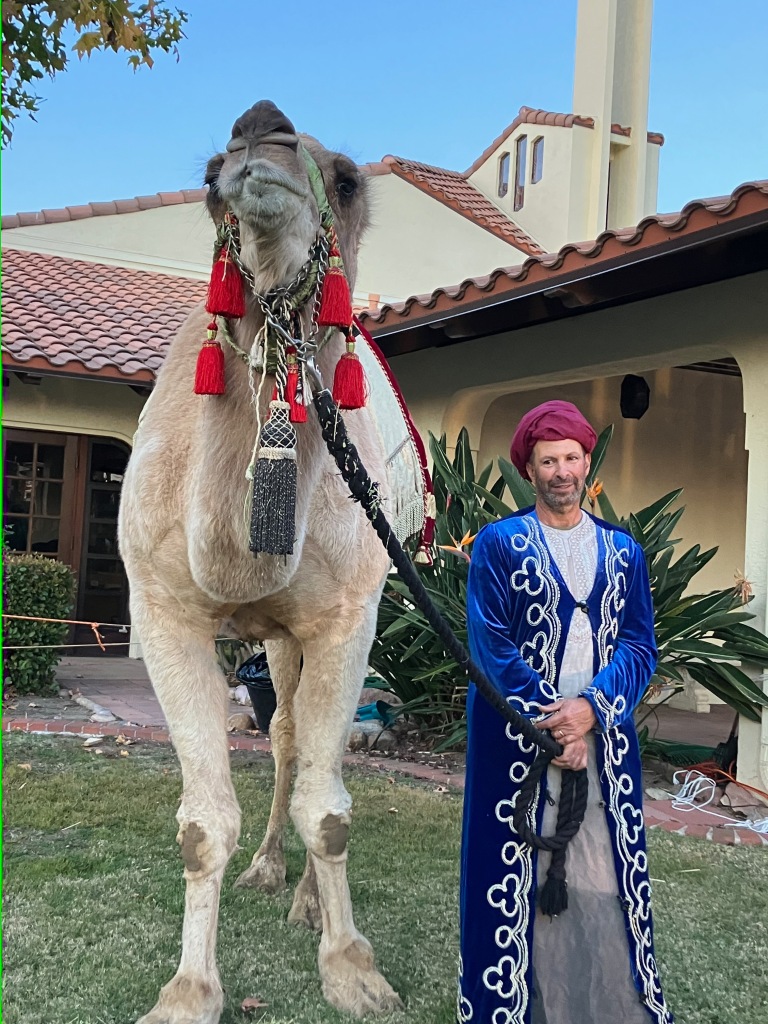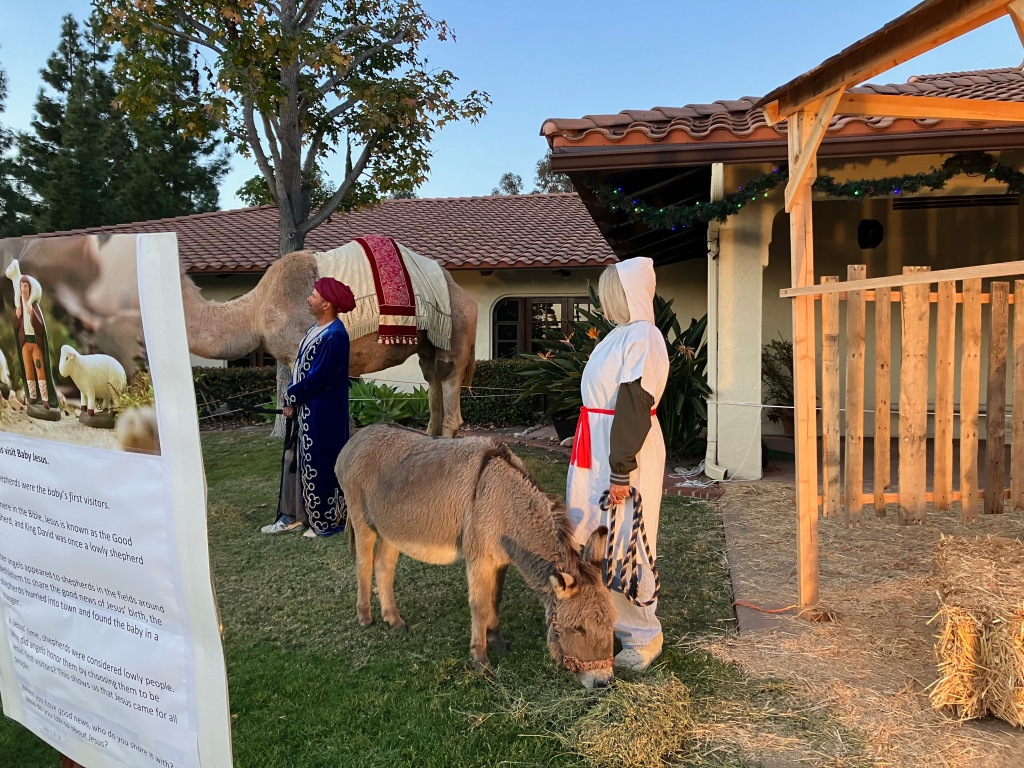This Tuesday is the first Tuesday of November, Election Day. Though 2023’s choices are for local and/or state contests, a fair number of eligible voters will show up. They will vote for some candidates or measures, against others, expressing both preferences and discontent. Some voters will show their discontent by refusing to participate, by staying home.
Next year on the first Tuesday of November, we’ll have national elections, choosing a legislature and a president and vice president, among other contests. Much ink has been spilled about the character and prospects of the man who became our nation’s chief executive from 2017 through the early part of 2021. He is now campaigning to resume that office in early 2025.
Those of us not enamored of Mr. Trump wonder what combination of factors may motivate those who support him. I’m not a huge fan, but I’m persuaded that the ways I and some others express our discontent could be healthier. I doubt that all “MAGA voters” are without merit. Some may even share some of my own concerns. So I went looking for guidance, for precedents, for wisdom from authors wiser than I am.
Last week, I revisited an extended quote by a woman of Polish descent who for many years represented my birth state of Maryland in politics. Before Ms. Mikulski ran for political office, she was a social worker and a lay leader at her church. At a 1970 religious conference on activism, she took up the cause of members of her community:
“America is not a melting pot. It is a sizzling cauldron for the ethnic American who feels that he has been politically courted and legally extorted by both government and private enterprise.
The ethnic American is sick of being stereotyped as a racist and dullard by phony white liberals, pseudo black militants and patronizing bureaucrats… He pays the bill for every major government program and gets nothing or little in the way of return. He himself is the victim of class prejudice…
He has worked hard all his life to become a “good American”; he and his sons have fought on every battlefield—then he is made fun of because he likes the flag.
The ethnic American is overtaxed and underserved at every level of government.
…There is a general decline of community services for his neighborhood, e.g. zoning, libraries, recreation programs, sanitation, etc.
His income … makes him “near poor.” He is the victim of both inflation and anti‐inflationary measures. He is the guy that is hurt by layoffs, (by) tight money that chokes him with high interest rates for installment buying and home improvements.
Manufacturers … are gouging him to death. When he complains about costs, he is told that it is the “high cost of labor” that is to blame. Yet he knows he is the “labor” and that in terms of real dollars he is going backwards.
The ethnic American also feels unappreciated for the contribution he makes to society. He resents the way the working class is looked down upon. … He is tired of being treated like an object of production. The public and private institutions have made him frustrated by their lack of response to his needs. At present he feels powerless in his daily dealings with and efforts to change them.”
Parallels between Mikulski’s “ethnic American” speech in 1970 and various 2015-plus utterances of campaigner Donald Trump abound. Mr. Trump, despite his unparalleled wealth and media access, identifies with ethnic America’s grievances. By the time he was born in 1946, Trump’s family was wealthy and well-connected. Nevertheless, he portrays himself as a victim, when he has more often been a perpetrator and/or benefactor of unjust policies. It’s easy to agree with Mr. Trump that “the system is rigged.” The follow-up questions we too seldom analyze are “for whom and by whom?”
A more recent analysis of our discontent, our tendency to fall prey to demagoguery, regardless of its source, came from a book I found at our local library: Read Dangerously: The Subversive Power of Literature in Troubled Times (2022). Author Azar Nafisi grew up in Tehran, the capital city of Iran. She came to the U.S. temporarily for study during the 1970’s, then returned to Tehran as a young adult. She lived and worked there through the tumultuous Iranian revolution of 1979. Later stripped of her university teaching post for refusing to wear a head covering, Nafisi worked at multiple jobs in Iran and abroad, eventually settling in the U.S. in the late 1990’s. She writes:
“The most seductive aspect of a totalitarian state is the security it offers. The truth is uncomfortable, and a dictator promises an abdication of responsibility from it. In America, I think it’s safe to say that most of Trump’s supporters are with him not because they respect Trump, or think that he is an honorable man, or are impressed with his vast knowledge of foreign policy. Instead, they feel secure in his promise to run the country like a business (financial comfort) and are consoled by the idea that he will “Make America Great Again” (spiritual comfort).”
A final touchstone for understanding our discontent and Mr. Trump’s appeal comes from rural America. Long-time small scale farmer, writer, activist, and promoter of “agrarianism,” Wendell Barry writes in The Art of Loading Brush(2017):
“For me, the ascent of Mr. Trump, a man who indulges his worst impulses and encourages the worst impulses of others, was … less a surprise than a clarification. His election … expose(s) beyond doubt the nearly absolute ownership of our public life by the excessively wealthy, who are dedicated to freeing themselves and their corporate and of-course-Christian peers from any obligation to the natural and human commonwealth. …
(A)grarianism … is the way of what I am obliged to call economic realism, indissolubly mated to ecology, to local ecosystems, and to the traditions of good husbandry and good neighborhood, starting at home and from the ground up. …
The order of loving care is of human making. It varies as it must from place to place, time to time, worker to worker, never definitive or final. It is measurable by the health, the happiness too, of the association of land and people. It is partly an ideal, … partly a quest, always and inescapably a practice.”
The quandaries we face as we try to make wise choices, both in our personal lives and in our elected leadership, cannot be solved by “going back.” Whether during the peak of U.S. manufacturing in the 1950’s that Trump romanticizes, or the peak of “family farming” Berry alludes to before the advent of mechanized agribusiness, our country has moved on. Meanwhile, as localities and as a nation, we have sometimes succumbed to the sorts of rigid religiosity Nafisi has described in post-revolutionary Iran. We in the U.S. have thrashed around as we confront issues of responsible stewardship, of equity, of rights and concomitant responsibilities. Some of the wisdom of a Mikulski, a Nafisi, or a Berry can be helpful in framing our ongoing national (and local) conversations.
Each of these authors emphasizes that we are participants—we cannot sit on the sidelines. We can engage in deep disagreements and still cohere. However, we must do our best to honor the heritage we’ve been gifted with, including the not-so-good parts. From time to time, we will make bad choices. The worst choice of all, though, is to abdicate responsibility for choosing, as Ms. Nafisi so aptly points out. So let’s disagree but continue to function, let’s vote with our ballots and our voices, not with our apathy, disjointed anger, or absence. Let’s use our discontent, rather than letting it use us.






